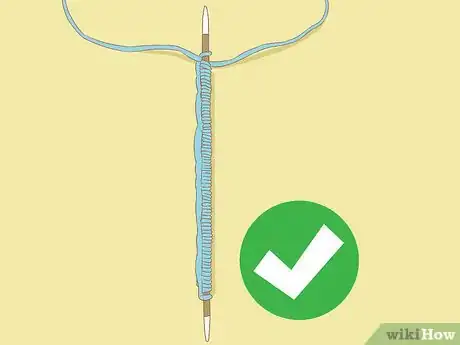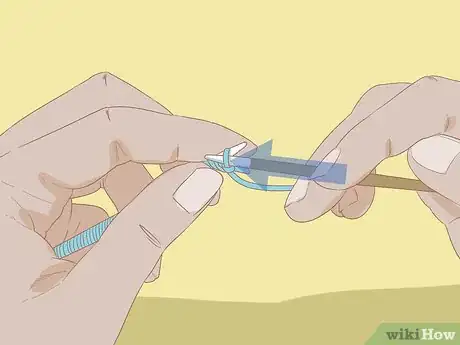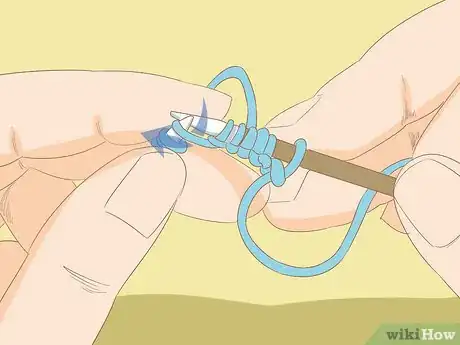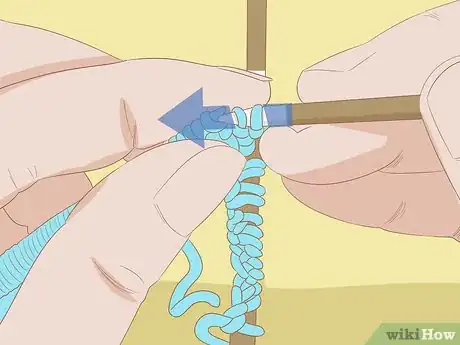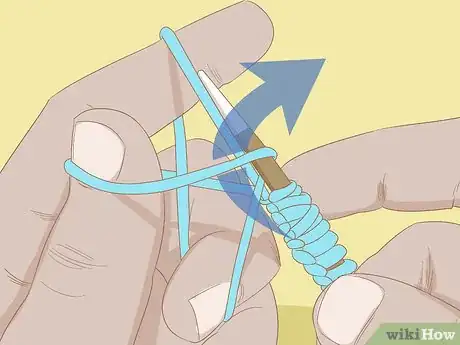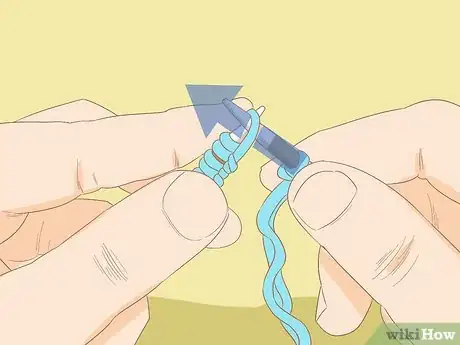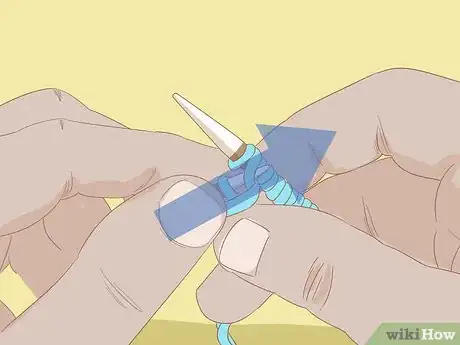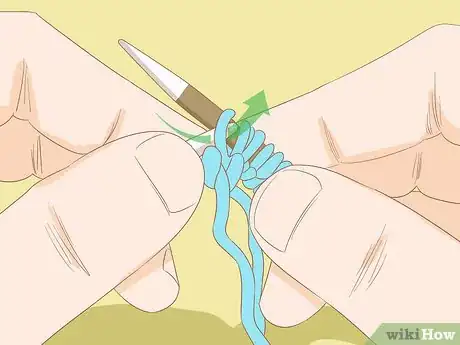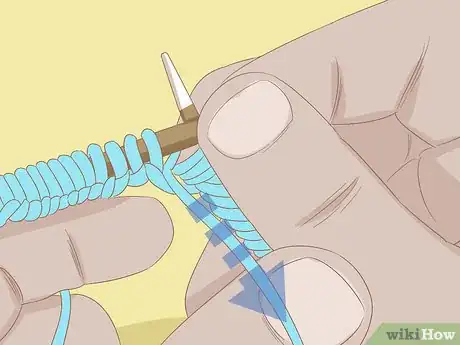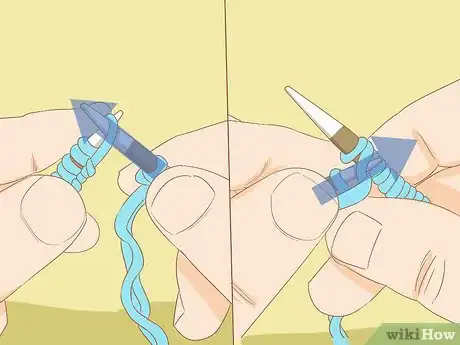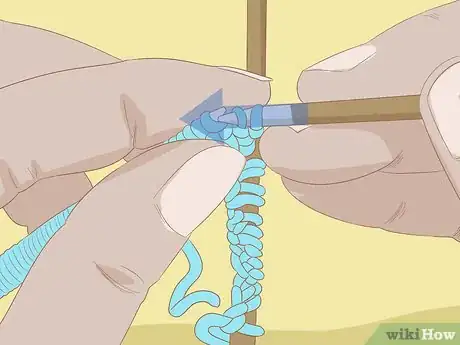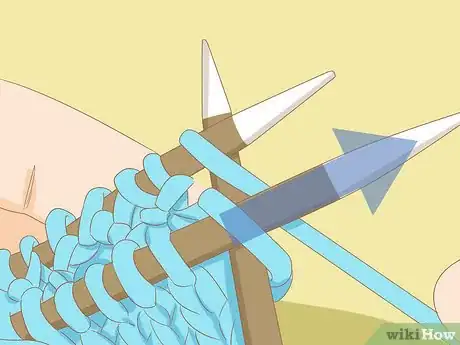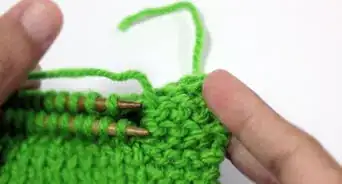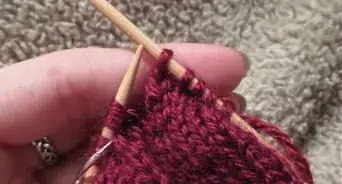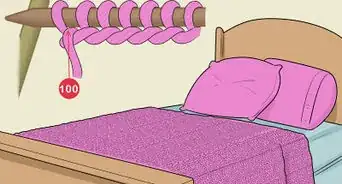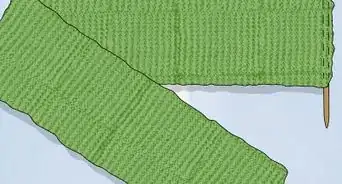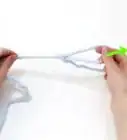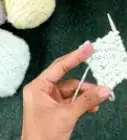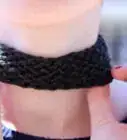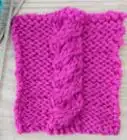This article was co-authored by Gregory Patrick. Gregory Patrick is a knitter who runs the popular blog Madman Knitting. He is also the author of the book "Mad Man Knitting or The Waiter and the Fly". He has been knitting and writing about knitting for over 10 years.
This article has been viewed 46,441 times.
Joining stitches is a crucial skill to learn for knitting in the round. If you are new to knitting in the round, then you may want to try the basic joining technique. If you have been looking for a way to make your joined stitches less noticeable, then try the invisible joining method. If you often struggle to keep your stitches straight when you join them, then start your project by knitting a few rows back and forth before joining to help you avoid twisted stitches.
Steps
Using a Basic Joining Technique
-
1Check the position of your stitches. Before you begin joining your stitches, make sure to check the position all the way around your circular or double-pointed needles. Make sure that all of the cast on stitches are pointing down and that they are not twisted. If you notice any twisted stitches, straighten them out using your fingers.[1]
-
2Insert the needle with the working yarn into the first stitch you made. Joining the first and last stitches you cast on in a round is just a matter of knitting or purling. Start by inserting your needle (knit-wise or purl-wise as required for your project) into the first stitch that you cast on. This will be the stitch that has a tail of yarn extending from it.[2]Advertisement
-
3Loop the yarn over the needle and pull through. Loop the yarn over the needle that you just inserted into the stitch. Then, pull this yarn through the stitch to create a new loop.
-
4Slip off the stitch and allow the new yarn to replace it. Slip the cast on stitch off of your left needle as the new stitch you just created replaces it on your right needle. Then, continue to knit or purl the rest of the stitches in the round as needed for your project.
Using the Invisible Join
-
1Cast on 1 extra stitch. To do an invisible join, start by casting on 1 more stitch after you finish casting on the required stitches for your project. Cast this stitch onto the needle in your left hand so that it is right next to the last stitch you cast on.[3]
-
2Slip the first stitch onto the left hand needle. Next, take the first stitch on your right hand needle and slip it onto the left hand needle. The first stitch on your right hand needle will be the one with the tail of yarn extending from it. Slip this stitch over to the other needle so that it is next to the stitch you just cast on, which is the one that has the working yarn extending from it.[4]
-
3Loop the cast on stitch over the slipped stitch. Use the right hand needle or your fingers to lift the stitch you cast on up and over the stitch you just slipped over from the other needle. Allow the cast on stitch to slip off the needle as it loops over the other stitch.[5]
-
4Slip the stitch back onto the right hand needle. Then, slip your first cast on stitch (the one with the tail extending from it) back over to the right hand needle again. This will allow you to work into the stitch for the new round.[6]
-
5Pull on the working yarn and tail to avoid any gaps. The stitch you cast on may have loosened up a bit as a result of looping it up and over the first cast on stitch. To ensure that you don't end up with a gap in your work, tug on the working yarn until the stitch is no longer visible. Tug on the tail as well to tighten up your first cast on stitch.[7]
- This will complete your invisible join! Repeat this sequence at the beginning of each new round to ensure a seamless look.
Avoiding Twisted Stitches
-
1Knit back and forth a few times. Instead of joining your stitches in the round right away, knit back and forth across the stitches you have cast onto your circular or double pointed needles. This will create some length and make it easier to tell if your stitches are straight. Knit the stitches as if you are only working across 2 straight needles.[8]
- Make sure to follow your knitting pattern's specifications if you are using one. For example, if you needle to work a stockinette stitch, then you cannot just knit all of the stitches as you would when working this stitch in the round. To work this stitch back and forth, you would need to knit a row, then purl a row, and repeat.[9]
-
2Join the sides using the basic or invisible joining method. When you are ready to join your stitches, you can either use the basic method or the invisible joining method. Either option will work to connect the two sides.[10]
-
3Seam the open edge when your project is finished. Because you have joined the sides after working a few rows back and forth, you will have a slight gap in your work. To close this gap, thread a yarn needle with the same color and type of yarn you are using to knit. Then, weave the yarn in and out of the stitches on both sides of the seam to close the gap. Tie off the yarn and cut the excess when you are finished.[11]
Community Q&A
-
QuestionHow do I join on a circular needle?
 Kat NordstromCommunity AnswerWhen you join on a circular needle, you will knit the stitch, but you use the tail end of the yarn on the piece to knit it as well as the knitting yarn.
Kat NordstromCommunity AnswerWhen you join on a circular needle, you will knit the stitch, but you use the tail end of the yarn on the piece to knit it as well as the knitting yarn.
Things You'll Need
- Yarn
- Circular or double pointed knitting needles
- Yarn needle
- Scissors
References
- ↑ https://www.purlsoho.com/create/double-pointed-needles/
- ↑ https://www.purlsoho.com/create/double-pointed-needles/
- ↑ http://newstitchaday.com/how-to-knit-the-invisible-join-in-the-round/
- ↑ http://newstitchaday.com/how-to-knit-the-invisible-join-in-the-round/
- ↑ http://newstitchaday.com/how-to-knit-the-invisible-join-in-the-round/
- ↑ http://newstitchaday.com/how-to-knit-the-invisible-join-in-the-round/
- ↑ http://newstitchaday.com/how-to-knit-the-invisible-join-in-the-round/
- ↑ http://cocoknits.com/tips-and-tutorials/techniques/now-join-being-careful-not-to-twist/
- ↑ https://www.woolandthegang.com/how-to/knit/stockinette-stitch-stocking-stitch
About This Article
If you're knitting in the round and want to join your stitches, insert your needle into the first stitch you cast on, then loop the yarn over the needle. Next, pull the yarn through the stitch to form a new loop. To complete the stitch, slip the old stitch off your left needle so it is replaced by the one you just made on your right needle. For an invisible join, cast an extra stitch onto your left needle, slip the first stitch from your right to your left needle, loop the cast-on stitch over the slipped stitch, and put the stitch back onto the right needle. To learn how to avoid twisted stitches when joining, read on!
